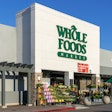
“Sustainability is really about continuous improvement — it’s a process, it’s a way of life; it’s not a project,” said Roger Cady, global sustainability lead for Elanco, speaking during the “Defining Environmental Sustainability” panel at the 13th annual Animal Agriculture Alliance Stakeholders Summit May 8.
Cady, in addition to three other panelists — Dr. Jason Clay, senior vice president, World Wildlife Fund; Aidan Connolly, vice president of corporate accounts for Alltech; and Dr. Mitch Abrahamsen, vice president of research and development for Cobb-Vantress – discussed the complex issues surrounding environmental sustainability and global food production. Each explained what sustainability means to their organizations and corporations and offered suggestions as to how agriculture can move forward into the future.
“If we need to double food production by 2050, or double net food availability, and we do it only through production, then we’re going to double the amount of land we use today, we’re going to double the amount of water we use today, and we can’t do that. We simply cannot,” said Clay. “We’ve got to really focus on other strategies: on productivity, on efficiency, on waste, on consumption.”
More from less
How does agriculture get more from less? How does agriculture produce more calories and more grams of protein with less land, less water, less grams of protein going in as feed? These are the questions of the 21st century, agreed the panelists. “If we don’t get those right, we’re going to be in deep, deep trouble,” said Clay.
To move towards solving this issue, Clay explained, producers need to stop focusing on a narrow view of sustainability, like how many tons or bushels were ultimately produced, and instead focus on optimizing many small things. “Moving forward, sustainability is going to be about optimizing…a thousand little things that make you more sustainable, not one big thing. And we have to get our heads around how to think about that.” The World Wildlife Fund is developing programs to help farmers achieve this level of sustainability.
In a new trend in sustainability, producers are beginning to share information on what their impacts are, the cost and the return on investment. Sustainability, agreed the panel, is a pre-competitive issue now — everyone depends on getting better, and it’s not something that will differentiate producers in the market. Put another way, explained Clay, “A market is going to be defined by the worst performers, not by the best.” Clay suggests that to double productivity globally, and cut environmental impacts by half, the focus needs to be on working with the bottom 25 percent of producers.
The future of sustainable agriculture
According to Connolly, agriculture’s thinking has changed in the last 25 years. “We were totally focused on producing food for the lowest possible price,” said Connolly. “Our thinking has changed, and I think our thinking will continue to evolve in the next 25 years.” The future of sustainability in the next 25 years, explained Connolly, will be about data management. Data will be the form by which companies distinguish themselves and become more efficient.
Economics, science, social and environmental issues are pushing and pulling the future of agriculture in different directions. “We can’t go in all directions at the same time. We really have to make some decisions today about what we think will be those drivers that are going to make a difference in our targeting of feeding the world,” said Abrahamsen.
Communicating sustainability
The panelists grappled with how to communicate sustainability efforts and other industry-wide improvements to consumers, specifically the millennial generation, who will define the future of sustainability. They agreed that agriculture needs a new strategy.
“The way we need to engage [millennials] is to be optimistic about the future of what we’re doing, about the capacity of what we can achieve, and what engages them the most is the idea that we’re going to feed people,” said Connolly.
Engaging millennials in this bigger picture is the framework in which to introduce new technology; however, once they are engaged, be prepared to have to explain, said Connolly. Practices need to stand up to scrutiny. The future, continued Connolly, may involve systems to remove producers who are not efficient or not doing the right things for their animals or economics. “I think we have to have systems for removing those bad actors from our industry so we do have a great story to tell, and so we can proudly stand in front of those millennials and say, ‘Our job is to produce enough food to produce 2 billion extra people on this planet, and do so in the right way,’” said Connolly.












